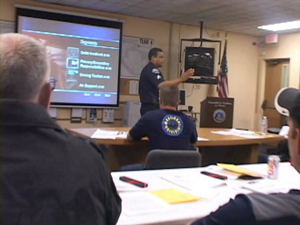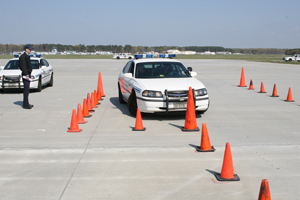
Receiving an offer of employment is not immediately accompanied by a badge, uniform, and set of keys to your new cruiser. Completion of an academy and field training program will be your final hurdles to becoming a full-fledged officer.
Each state and jurisdiction has different training requirements. In some areas, you can go through basic law enforcement training at the local community college or other state-sponsored institution first and then apply to the agency of your choice. Other jurisdictions may require you to complete their in-house training program after successful completion of their hiring process or sponsor you to attend an academy elsewhere. Still others may accept your external academy certificate but also require completion of an abbreviated version of their academy. Regardless, you can count on receiving extensive training prior to your first day on the job. The majority of your initial training will be classroom based, supplemented by practical exercises and scenarios. You will hold the rank of “cadet” or “police trainee” during this time, and if sponsored by a hiring agency, receive your first paycheck, and be eligible to receive benefits.
There is no standard national curriculum, but the state may guide agencies in developing training programs. Each state has a Commission on Peace Officers Standards and Training (POST) or similar entity which establishes minimum selection standards for law enforcement officers, sets minimum education and training standards, and serves as the certification or licensing authority for sworn personnel (1). These agencies may be helpful in getting an idea of your state’s approach to law enforcement training.
According to the Bureau of Justice Statistics (BJS) Census of State and Local Law Enforcement Training Academies, in 2013 a total of 664 state and local law enforcement academies operating in the United States offering basic law enforcement training to individuals recruited or seeking to become law enforcement officers. These include:
- 71 state academies;
- 307 college, university, or technical school academies; and
- 286 local or regional academies.
According to BJS, the median duration of basic recruit training - excluding any field training component - was 21 weeks across all academies with a range anywhere from four weeks to six months.
Following is a summary of training topics, the percentage of academies providing each, and the median number of hours.
Major subject areas included in basic training programs in state and local law enforcement training academies
| Training Topic | Percent of academies providing training in topic area | Average number of hours of instruction required per recruit* |
|---|---|---|
| OPERATIONS | ||
| Report writing | 99% | 25 hrs |
| Patrol procedures | 98 | 52 |
| Investigations | 98 | 42 |
| Traffic accident investigations | 98 | 23 |
| Emergency vehicle operations | 97 | 38 |
| Basic first aid/CPR | 97 | 24 |
| Computers/information systems | 61 | 9 |
| WEAPONS/DEFENSIVE TACTICS/USE OF FORCE | ||
| Defensive tactics | 99% | 60 hrs |
| Firearms skills | 98 | 71 |
| Use of force | 98 | 21 |
| Nonlethal weapons | 88 | 16 |
| SELF-IMPROVEMENT | ||
| Ethics and integrity | 98% | 8 hrs |
| Health and fitness | 96 | 49 |
| Communications | 91 | 15 |
| Professionalism | 85 | 11 |
| Stress prevention/management | 81 | 6 |
| LEGAL EDUCATION | ||
| Criminal/constitutional law | 98% | 53 hrs |
| Traffic law | 97 | 23 |
| Juvenile justice law/procedures | 97 | 10 |
| *Excludes academies that did not provide this type of instruction. Source: U.S. Department of Justice, Bureau of Justice Statistics (BJS), Census of State and Local Law Enforcement Training Academies, 2013 |
||
Additional training topics include mental health, racial relations, emergency planning, community policing strategies, and crime prevention strategies.
Field Training
After completion of the academy, field training will be the final component of your training. During this time you will likely be paired with a training officer and accompany him/ her on routine patrol. Many agencies make an effort to rotate recruits through different shifts (day versus night; weekend versus weekday) and different areas of the jurisdiction to ensure maximum exposure. According to BJS, among agencies conducting field training, the median number of hours in the field training segment was 180 hours or about eight weeks.

Your training does not stop with graduation from the academy and completion of field training. Most states require a number of continuing education hours to maintain certification. If, after a few years on patrol, you decide to apply for a special assignment, additional training will be involved. Likewise, advancement in rank will involve training on leadership and supervisory skills.
(1) International Association of Directors of Law Enforcement Standards and Training, Model Minimum State Standards For Post Administration, on the Internet at http://www.iadlest.org/standards.
